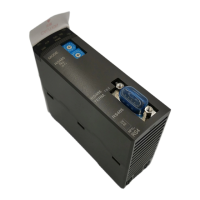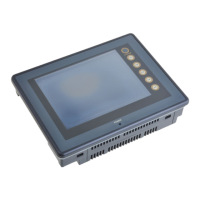1-3
Section 1 Specications
Item Main unit specication
External interrupt input function Max. 16 points (rising edge / falling edge / rising and falling edges)
Pulse catch function
Max. 36 points (rising edge / falling edge)
High-speed
counter
No. of channels Max. 8 channels (single phase)
Count frequency
Max. 200kHz (Advance Main unit)
Max. 100kHz (Basic Main unit)
Count mode U/D, U/D × 2, P/R, P/R × 2, A/B, A/B × 2, A/B × 3, A/B × 4 (Note 1)
0.1 ms high-speed timer When using high-speed counter in high-speed timer mode
High-speed
pulse output
and
High-speed
positioning
No. of axes Max. 4
Output frequency Max. 200kHz
Output pulse mode U/D, P/R, A/B, PLS, PWM (Note 1) (Note 2)
Pulse output instruction By SPF original instructions
Communication
port
PORT0 (RS232C) Loader port built in main unit
PORT1, PORT2
(Communication board)
Communication mode:
Loader communication, general-purpose communication, CPU link communication
(only one port among them),
Modbus RTU master communication
Transmission speed:
1200/2400/4800/9600/19200/38400/57600/115200 bps
PORT3, PORT4
(Communication unit)
Diagnostic function Self-diagnosis (memory check, ROM sum check), system conguration supervising
Security function Password (Set by the support tool)
Calendar function
Available up to 31 Dec. 2069 23:59:59
Precision: ±20 sec/day (at 25°C)
Backup
(Note 3)
Program memory,
system denition
Built-in RAM: Built-in lithium primary battery
Built-in ash memory (Note 4)
ZIP le Built-in ash memory
Data memory Built-in RAM: Built-in lithium primary battery
Calendar Calendar IC: Built-in lithium primary battery
User ROM function
Programs, system denitions, and zipped les can be stored in the external memory
pack (NA8PMF-20).
1-2 Function Specications
Notes:
1) U/D: Up/Down pulse mode, P/R: Pulse / Direction signal mode, A/B: A/B phase mode, x2: 2 multiplication, x3: 3 multiplication,
x4: 4 multiplication
2) PLS: Single pulse output mode, PWM: PWM output mode
3) The backup time is 10 years or more (ambient temperature: 55°C)
4) Notes on rewriting programs
When rewriting the program in the main unit from the loader while the PLC is running, the built-in RAM is changed, however,
the built-in ash memory is unchanged. As a result, the contents of the RAM does not match those of the ash memory, and
the RUN/MEM LED blinks to prompt the user to transfer the contents of the RAM to the ash memory.
After rewriting the program, be sure to transfer the contents of the RAM to the ash memory. When the transfer is completed
normally, the RUN/MEM LED turns OFF.
<Method 1>
By using the loader, transfer the contents of the RAM to the ash memory.
<Method 2>
After rewriting the program, turn OFF the main unit and then ON again. When the power supply is turned ON, the contents
of the RAM is automatically transferred to the ash memory.

